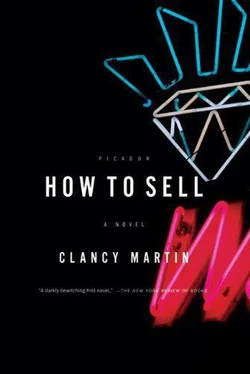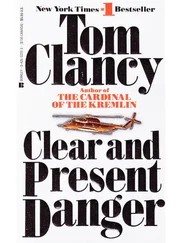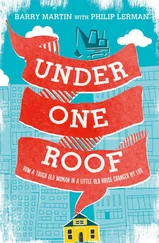“Put that one in the mantrap with him,” he said. “You!” he shouted at Baseball Cap. “Quiet down! You want I should shoot you? You want I should hit you on your head?” He was breathing heavily and he sat down, suddenly, in a green leather chair I often sat in on that side of their little showroom.
“Use the gun, Idan,” he said. “Wipe it off. But hold a gun on him while you put his partner in there. Robert, no, you do not move.” I was walking around the showcase to help Idan. “This is our business.”
Idan had dragged the unconscious robber into the mantrap. His friend huddled in a corner. I expected Idan to menace him a little with the gun but he was all business. Then I remembered that after high school Idan had been in the army like all Israelis.
“Let them go, Idan,” Kizakov said. “We don’t bother with them anymore.”
Kizakov bent over and untied and tightly retied his shoelaces. He pulled the black leather laces so hard I thought he would break them. Then he sat up straight and brushed his hand back across his head.
“Bring us some vodka, Idan. How is your eye? All right? You will have a black eye for the girls. You can tell them it was a prizefight! Come look at this diamond and tell me what you think. It is better than I would have guessed. They must have stolen it also. It is probably three thousand a carat, I am thinking. Come on, Robert, have a glass of vodka with me and my son. We are all three of us comrades in arms now.”
This was one of my best times in the jewelry business.
Once the story got around town, the joke was that only Elie Kizakov could be robbed and turn a twenty-thousand-dollar profit on the deal.
“You saw it, Bobby? Did he really pistol-whip that nigger?”
“He wasn’t black. They were two white guys.”
My role in it as eyewitness made even me a minor celebrity. That added some fun to the runs.
Several years after this incident Idan married an Israeli diamond wholesaler’s daughter, one of the biggest in the business. I was at their wedding in Tel Aviv. Clouds of live doves were released from great hidden nets during specified times in the ceremony. Soon she caught him in an affair with a man and made it very public in the industry. She went door to door with the story. That kind of spectacle, enacted by his wife, was not well received. They divorced, and last I heard he was selling cars.
S heila wouldn’t let me sell until after Thanksgiving, so along with my Dallas runs I spent the next six weeks on the buys and the repair counter. These were the last two showcases on the east side of the store, behind the bead board, the rice pearl case, and the men’s jewelry. It was also where we did our giveaways, the coupons for free amethysts, topazes, or “Authentic Two-Carat Cubic Zirconium” that Popper ran across the bottom two inches of the big full-page Star-Telegram ads every Friday, Saturday, and Sunday.
Everyone except for the elite among the sales force, the real top-of-the-boarders, had to do a turn on these counters once a week. But new people started there before they went on the floor. Most of the salespeople — and the salespeople in training, like me — preferred the buys to the repairs. You could make the store more money faster on the right buy than on any sale. The buys, during the early eighties gold boom, were how Ronnie and Sheila made their stake.
I had been instructed on these facts, yet I avoided buying because of the young mothers, the edgy-eyed blacks and Mexicans, the poor and discouraged people. When a sad buy approached the counter I went to the bathroom, or bent and tied my shoelaces very methodically and patiently, and someone else picked it up.
It was Friday morning and I had just taken in a clean, oil, and adjust on a ladies’ Rolex two-tone. I walked my customer through the crowd to the door and thanked her. That was unusual with a repair but I took special care of the Rolexes. As soon as the door closed behind her Jim caught me by the arm.
I thought I was in trouble for dawdling. I had been taking my time with her because I had been eating Lisa’s speed all morning and I felt that if I took a step the world would tilt over on its side. Probably onto my head.
“Is that a Rolex? Is that a ladies’ two-tone? Is that her leaving? In the suit? The black suit?”
“It’s a COA. I got her for four hundred.” On a nice COA Jim told me to try to up-sell them into jewelry if I could. So when he grabbed the job envelope I thought he was looking for a few extra items or a second invoice.
“It wasn’t my fault,” I said. “She wasn’t buying. I even showed her twister beads and silver charms. She only cared about her watch.”
“We need the COAs. You get a hundred bucks on a COA now.”
“Right.” I saw he was not angry. “I know. Give it to the Watchman, right?”
“We can do it. Why waste the job envelope? Let me take a look.”
He poured the virginal stainless and gold watch out of the paper and cardboard envelope. It was a pretty ladies’ two-tone.
“Perfect. It even has the right dial. Come with me. Hurry.”
We squeezed our way through the crowd to the back-of-the-house.
Before we were past the diamond desk, Don Frazier, the bullion and auction man, seized Jim by the arm.
“Whose watch is that? Where did you get that?”
Jim laughed. “Sorry. My deal.”
“You’re not shipping that watch.”
“Don’t be an asshole.”
In back the phone girls were clustered around lunch, eating. The fat girls standing at the catered sandwiches, their hands full and their mouths wet, looked like animals at a carcass.
I followed him around the safes and through the rows of desks to the little jewelry cleaning room. Behind a half-finished aluminum-beam and Sheetrock wall, on the opposite end of the store from the bookkeeper’s room and the stairs to Mr. Popper’s office, there was a bench and sink and the various messy tools you need for cleaning jewelry. We had six ultrasonics, of various temperatures and strengths, lined up in a row and always humming and bubbling like scientific cauldrons, and two big red and blue Swest steamers. Beyond the steamers in what had once been a coat closet was the polishing wheel. There was no vent hood or dust screen. They had simply put it on an old desk safe, screwed it into the wall, and plugged it in. Only the older guys were allowed to use this machine. It was dangerous and you could destroy a piece of jewelry in an instant. The most common mistake was wrapping a bracelet or necklace around the wheel. Then it would spin ferociously until you could shut the machine off. This would stretch the gold, pop out diamonds, and shatter color. The Watchman had once notoriously destroyed a seven-carat black opal, a fifteen-thousand-dollar gem at cost, just this way.
Working very quickly, Jim removed the bracelet from the head of the watch, changed the wheels on the polisher, and began to work on the outside steel links of the Rolex bracelet.
“What are you doing?” I asked him. “I thought the jewelers do that. While Benny’s servicing the head.”
“Set it,” he said, and handed me the head of the watch. “Give it a good wind. And wipe it down. Clean next to the lugs. That’s where the dirt will be. We want to make it look brand-new.”
First I cleaned the interior of the lugs with a toothbrush we kept at the steamers. Inside the lugs, at the corners, a black and green wax or dirt gathers like the grime you might find under a fingernail. It is made up mostly of human skin and oils. Then I used a Q-tip and alcohol to clean the rest of the head. Finally, after checking the crown to make sure it was tight, I held the head in rubber-tipped metal tongs like I had seen the watchmakers do and steamed off the watch.
Читать дальше











